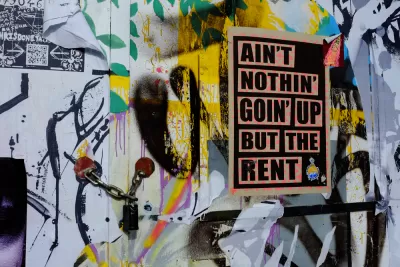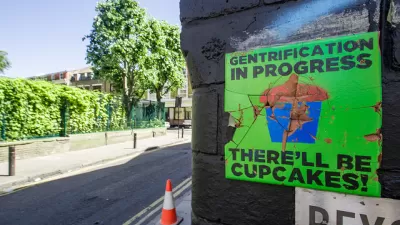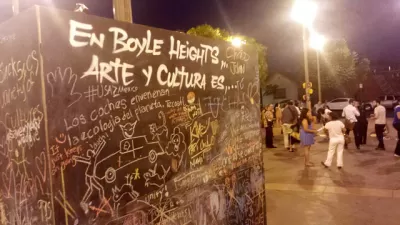New research finds evidence of racial "boundary movements," in older, denser U.S. cities. The research explains more about why gentrification feels like such a powerful force, for those experiencing its effects.

Ryan Briggs shares news of a study written by Jonathan Tannen, for his dissertation at Princeton University. Tannen's research uses a Bayesian modeling system to detect racial borders in the 100 largest U.S. cities, quantifying "the invisible lines of segregation."
Briggs summarizes one of the key findings of the research: "As more suburban whites moved back to urban areas, old racial boundaries were moving, and spreading outward. But the neighborhoods themselves weren’t desegregating." Instead, the process of neighborhood change discovered by Tannen is better described as resegregation, according to Briggs.
Tannen found evidence of these boundary movements in cities like Chicago, New York, and Boston. "But interestingly, and potentially uncomfortably for proponents of walkable urbanism, the phenomenon was only apparent In auto-centric cities, gentrification was more diffuse, and racial boundaries were less clear," according to Briggs.
However, none of Tannen's study amounts to a final say on the impacts of gentrification. Briggs is careful to note the limitations of the research, and other studies that find evidence of the limitations of gentrification and its displacement effects.
FULL STORY: When 'Gentrification' Is Really a Shift in Racial Boundaries

Planetizen Federal Action Tracker
A weekly monitor of how Trump’s orders and actions are impacting planners and planning in America.

Congressman Proposes Bill to Rename DC Metro “Trump Train”
The Make Autorail Great Again Act would withhold federal funding to the system until the Washington Metropolitan Area Transit Authority (WMATA), rebrands as the Washington Metropolitan Authority for Greater Access (WMAGA).

The Simple Legislative Tool Transforming Vacant Downtowns
In California, Michigan and Georgia, an easy win is bringing dollars — and delight — back to city centers.

The States Losing Rural Delivery Rooms at an Alarming Pace
In some states, as few as 9% of rural hospitals still deliver babies. As a result, rising pre-term births, no adequate pre-term care and harrowing close calls are a growing reality.

The Small South Asian Republic Going all in on EVs
Thanks to one simple policy change less than five years ago, 65% of new cars in this Himalayan country are now electric.

DC Backpedals on Bike Lane Protection, Swaps Barriers for Paint
Citing aesthetic concerns, the city is removing the concrete barriers and flexposts that once separated Arizona Avenue cyclists from motor vehicles.
Urban Design for Planners 1: Software Tools
This six-course series explores essential urban design concepts using open source software and equips planners with the tools they need to participate fully in the urban design process.
Planning for Universal Design
Learn the tools for implementing Universal Design in planning regulations.
Smith Gee Studio
City of Charlotte
City of Camden Redevelopment Agency
City of Astoria
Transportation Research & Education Center (TREC) at Portland State University
US High Speed Rail Association
City of Camden Redevelopment Agency
Municipality of Princeton (NJ)





























